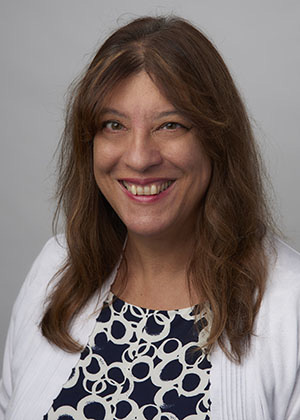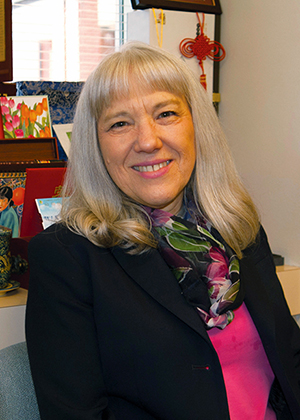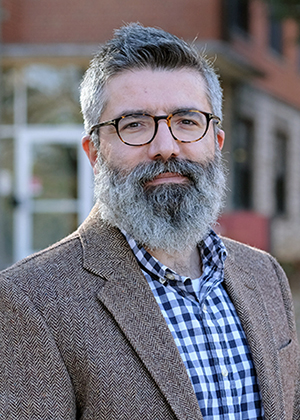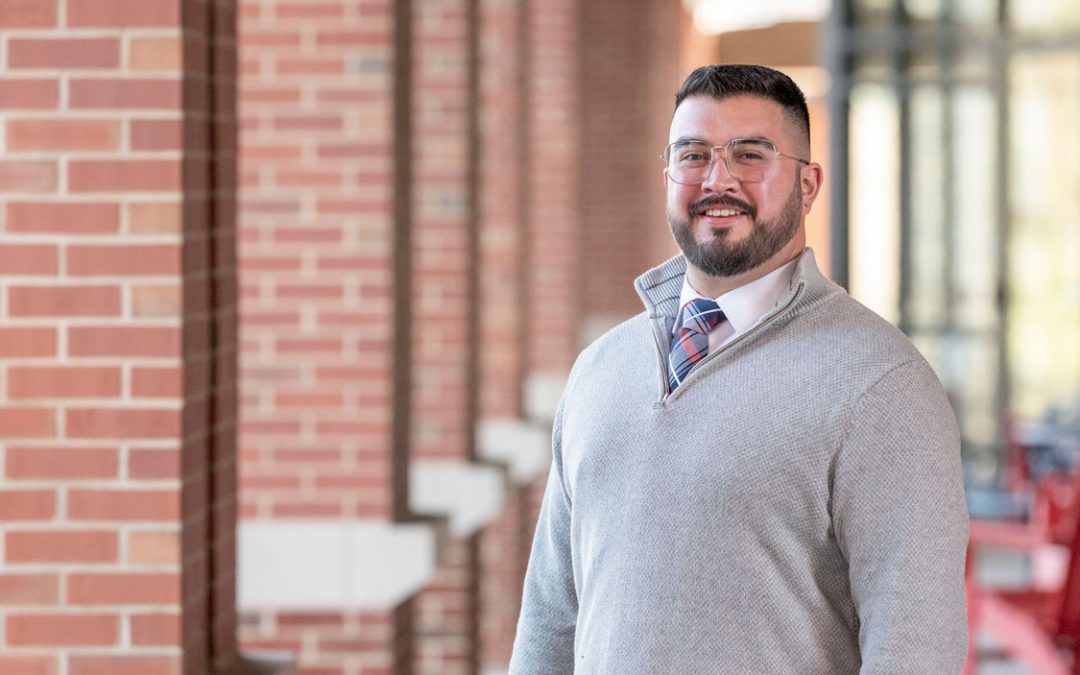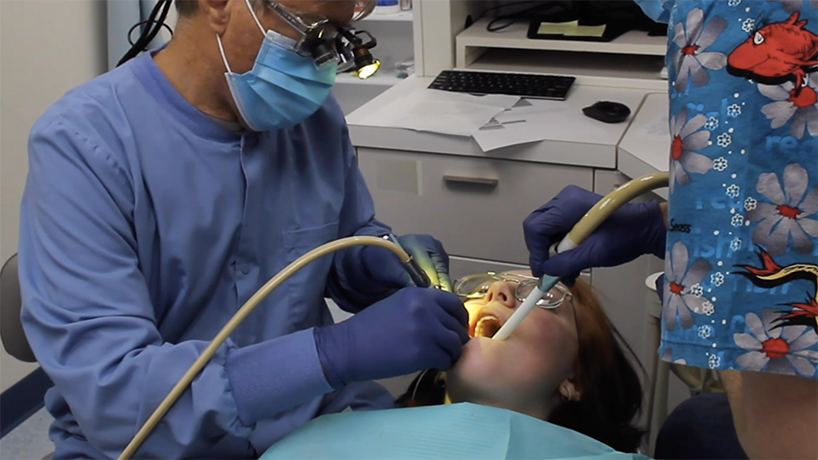
UMSL College of Nursing alumna Carol Berger led the creation of the documentary “Rural Children in Crisis: Access to Missouri Oral Care,” which highlights the dental health disparities faced by low-income children in rural Missouri. She started on the path toward this with her DNP clinical scholarship project. (Video still)
The documentary opens with a smiling child. The camera zooms in to focus on the boy’s mouth, giving the viewer a close view of what should be his front teeth.
But, instead, he’s missing four from his top row, and three silvery crowns peek out from the corners of his grin.
“His teeth were rotted away here at the front, like up to the gum,” said Rachel Hakim, the boy’s foster mom. “…if I call my doctor, it’s very easy to get the help that I need. But for the kids, through Medicaid, it’s an extremely difficult time. I have to set like a whole, couple hours aside just to do the research and know that.”
The scene is from “Rural Children in Crisis: Access to Missouri Oral Care,” which was created, in part, by University of Missouri–St. Louis alumna Carol Berger, a three-time graduate – BSN, MSN and DNP – of the College of Nursing. She now works at Maryville University as an assistant professor of nursing.
It’s Berger’s voice that guides the narrative during the 18-minute documentary as she interviews foster moms, doctors, dentists and other experts. It was produced in conjunction with the Missouri Office of Dental Health, including State Dental Director John Dane; UMSL Professor Anne Fish and Assistant Professor Umit Tokac, who contributed to the research; Maryville faculty Scott Angus and Lilli Kayes; and composer Carl Leta.
- Assistant Professor Carol Berger
- Professor Anne Fish
- Assistant Professor Umit Tokac
The result is a story that Berger hopes will impact how Missouri providers care for the teeth of children before five years of age, when they typically start receiving dental care.
“We tolerate children going through the earliest years of their life with gums infected and their teeth decayed,” she said. “I hope it raises awareness of what kids go through when they’re missing teeth and how a simple process that costs $1.50 can really make a difference.”
The problem that the documentary highlights is multifaceted and primarily impacts children from low-income backgrounds living in rural areas of Missouri. Partially because of a lack of patient education and because typical dental care doesn’t start until later in life, children develop caries.
After eating, digestive acid and sugars from foods sits against the dental enamel, pulling out key minerals and making it too soft. That’s especially true for babies consuming milk.
A common result is baby bottle tooth decay, where the front sets of teeth can erode to the gum line. But Berger also has seen other cavities and tooth fractures throughout the mouth.
“Kids live with this condition that no adult would live with,” Berger said. “They can’t eat, they can’t speak, they have problems sleeping and they’re in pain. If we pull their teeth, they live that way for five or six years, and they have to learn to eat and speak without their first four top or bottom teeth.”
Children without those key teeth often develop speech problems and have to relearn how to eat once adult teeth emerge.
But if low-income or foster children covered by Medicaid have eroded or cavity-filled teeth, getting those treated isn’t simple. That’s because, in rural Missouri, not many providers accept Medicaid, and that number continues to decrease with time.
Gregory Casalone, a doctor of dental surgery and director of the Lincoln County Health Department Dental Clinic, states that for Medicaid patients, the state reimburses 30 percent of dental costs for most dentists or clinics, compared to 60 percent for a federally qualified health center.
As a result, the documentary notes, only 23 percent of dentists in Missouri accept Medicaid patients. For children in rural areas, that can necessitate a trip to St. Louis or Kansas City to get cavities filled or teeth pulled.
“The biggest problem is dollars,” Berger said. “It’s not that dentist aren’t willing. They volunteer their time. They serve the community with free clinics where they pull teeth all day for people who don’t have insurance. They are a giving profession, but no profession can operate in the red and survive.”
Berger’s answer to this problem is prevention, specifically through a fluoride varnish, a solution she first came upon when creating her clinical scholarship project for her UMSL DNP. She was working in a rural health clinic in Elsberry, Missouri, and started noticing how “strikingly bad” the children’s teeth were.
She wanted to know if this was a state-wide problem and, if so, would education or preventative care help. That became her 2012 project, “Instituting an Oral Health Preventive Service Program, Including Fluoride Varnish, for Preschool Children Birth to Five Years in a Rural Health Clinic: A Clinical Scholarship Project.”
Among her various findings, Berger discovered that the application of a fluoride varnish in children as part of the regular well child exams went a long way toward preventing caries.
Fluoride, a mineral that’s often added to the water supply, works by re-mineralizing teeth and can reverse early stage tooth decay. But in areas without palatable tap water, well water or for those who prefer bottled water, there’s no or little protection for residents’ teeth.
Fluoride varnish could make up that gap and is a quick and low-cost treatment – approximately a $1.50 cost with a $15-to-20 reimbursement by Medicaid.
“Missouri does have an oral health school-based program, and they encourage providers, like myself, to do an annual fluoride varnish and give education for children who are younger than school age,” Berger said. “As medical providers, we could literally be putting fluoride varnish on the very first tooth to erupt, at six months, at 12 months, at 18 months. They could have that protection, if we would just add that in to the normal well-child visit, and Medicaid pays for it.”
She published her DNP research in The Nurse Practitioner which was accepted for publication four weeks after graduating and has continued working and publishing in this area, bringing on Fish, Tokac and others along the way.
“If you ever want to get something published, Anne is the person that ensures it’s on target and it’s scientifically sound,” Berger said. “We worked together with Umit to do the statistical modeling.”
Berger never imagined she’d be so focused on teeth when she first started her nursing career, but she’s gratified to have started to see an impact from her efforts. She’s begun to hear of providers implementing fluoride applications and watched the growth of teledentistry bring care to areas without providers. The numbers have also gone in the correct direction, with the amount of caries in children in Missouri slightly on the decline.
But there’s still a lot of work to do. She hopes that medical providers will watch the documentary, get inspired, get involved and start providing fluoride varnish.
“It’s slow, but we are getting there,” Berger said. “I think things are moving in the right direction. But we have to make a lot of noise.”
Media coverage
St. Louis Public Radio

